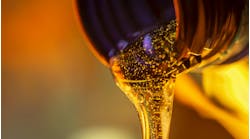To keep truck bodies cleaner this summer, build a bug out bag
Deer aren’t the only animals pelting trucks on the road. Far more insects lose their lives on the highway every day, especially in the summer, leaving their pulverized exoskeletons and gooey innards all over the hoods, grilles, headlights, and windshields of once-beautiful trucks across America. And after baking in the sun for a few hours, those caked-on bug guts aren’t easy to get off.
It’s a problem chemist Vann Brown sought to address when he invented BullSnot! VisABull glass cleaner, an enzymatic compound that can be used to clean anything from mirrors to the body.
“You spray it, give it 15 seconds, and wipe it off,” explained Brown, the CEO, and founder of Brown Ox Ventures, which manufactures BullSnot! products. “It takes off any kind of organic material—bugs, resins, bird poo, even DEF fluid because that's almost chemically the same as cat urine.”
Brown says to use microfibers when wiping the cleaner off to avoid swirl marks and scratches in the paint. He’s releasing non-woven microfiber replacements as early as next year. The name, of course, will be Snot Rags, he said.
Read more: Spring cleaning tips for the shop
The Georgia native said he initially set out to formulate a chemical to remove love bugs, as a substitute for all the “truckers out there with razor blades trying to get bugs off.” This summer VisABull will be available in a new delivery system. Called VisABull Rocket Spray, the aerosol will increase from the typical 12 to 18-in. range to 15 feet, to help truckers clean windshields better.
Brown said his products do cost more, but are gentler on the truck.
“You can get glass cleaner for $5, but you get pneumonia, alkaline, or an acid,” he said. “You're not getting the same technology, and they don't take off the bugs.”





